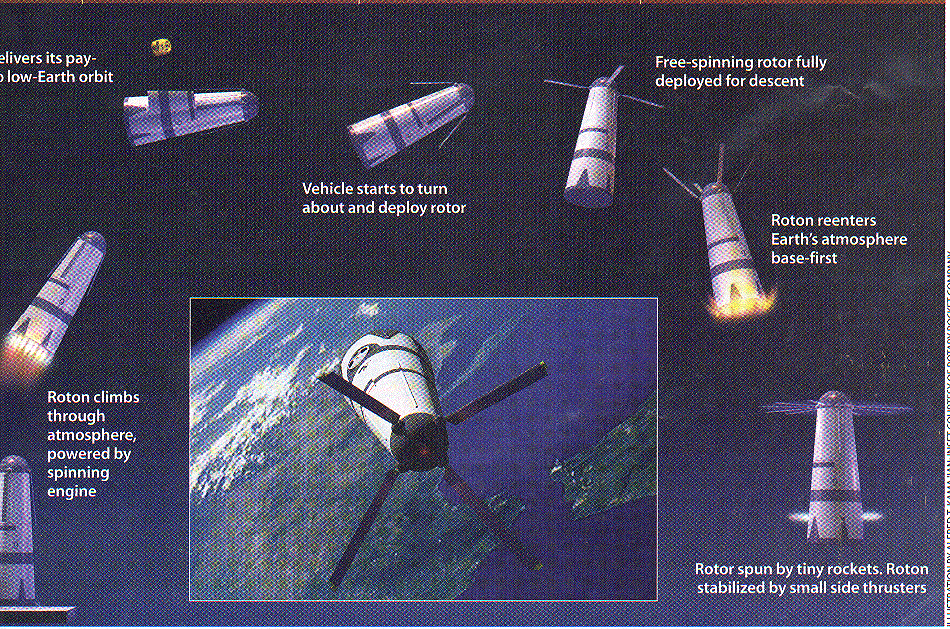
There are mainly two proposed propellant types for orbital launchers: Standard chemical rocket engines, and turbojet/ramjet/scramjet combinations. Obviously the standard chemical rocket engine would be least complex, but it must carry a lot of fuel, and this makes it relatively inefficient. The second propulsion type is very complex, and would be costly to build, and maintain, however, it saves a lot of money on fuel charges. I will talk more later about this second propulsion type.
Some of the more noteable future orbitall launch programs under developement are being run by private businesses, instead of governments. The programs under-way include the Kistler Reusable Rocket, the the Roton Rocket, Space Access, and the above mentioned VentureStar program. Two of these three future single stage to orbit launch vehicles are being run by private companies. Obviously there are also many more programs, but these are most noteable. The first rocket, the Kistler Reusable Rocket, will fly into orbit on Kerosene/LOX rocket, dump its payload, reenter nose first, slow itself with parachutes, and land on airbags. This is one of the more safe and conservative plans. The Roton Rocket, however is much more risky, as it flies into orbit on standard engines, deploys helicopter style blades, reenters, and uses the rocket spun blades to slow the rocket's descent. Obviously, things could easily go wrong with the slowing blades, and the craft would crash. The third program, space access is still more risky, as it uses the unproven air breathing Ramjet/Scramjet/Turbojet combination, however, the fuel cost which is saved could be more than enough to make this a very efficient program
No matter how you get into space, money is key. All of the future programs will cut cost in the long run, or be scrapped.
The ion drive
Fusion and antimatter drives
Light sails
Laser propelled light craft
Space Tethers
Ramjet/Scramjet engines
Other earth to orbit propulsion
Back to advanced propulsion main page
Home